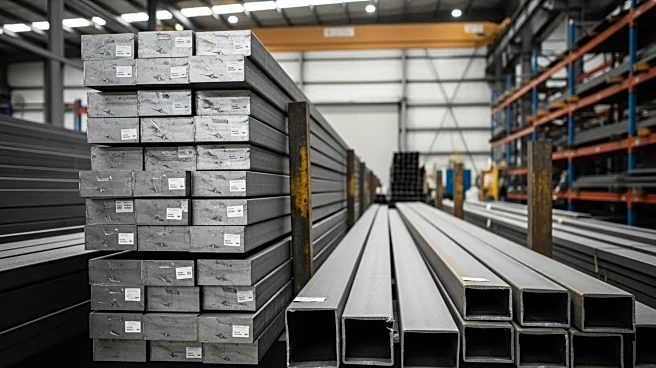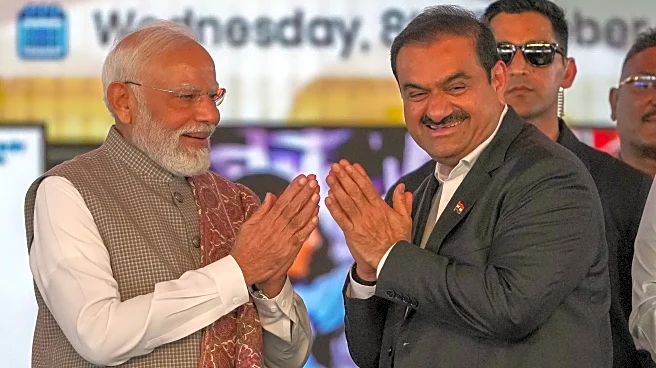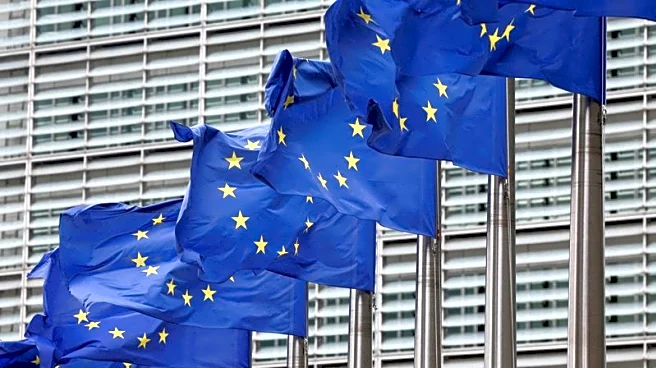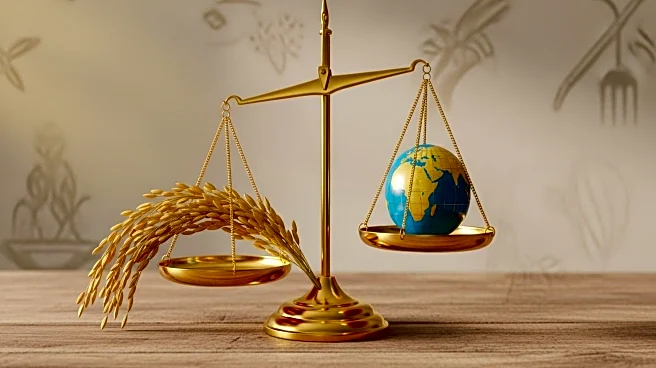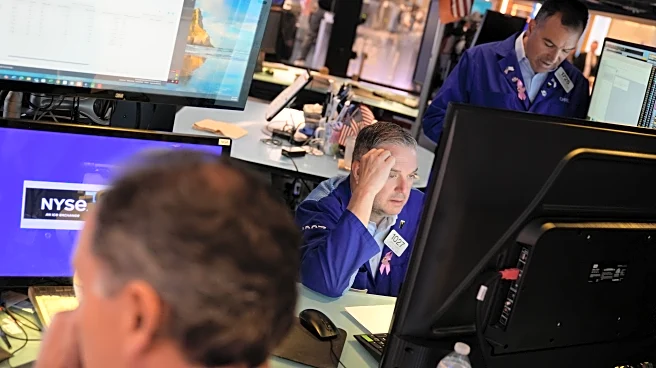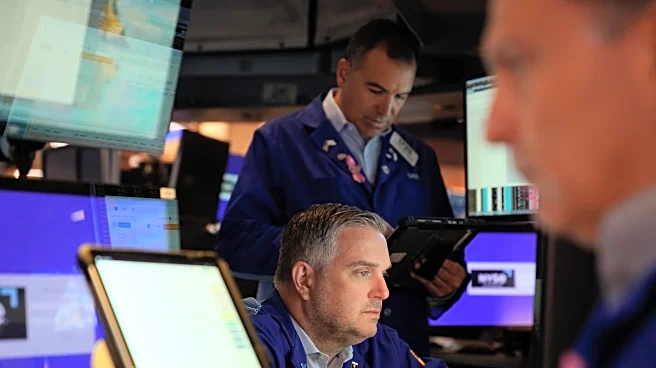What's Happening?
India became a net importer of finished steel in September, with imports totaling 0.65 million metric tons, despite a 36.3% year-on-year decrease. The Indian government has recommended a three-year import tariff of 11% to 12% on certain steel products to reduce shipments from China, the top producer. Meanwhile, India's finished steel exports increased by 47.6% year-on-year, and domestic production rose by 14.7%. Consumption also grew by 9%, although it dipped slightly from the previous month. India's crude steel output reached 13.8 million metric tons, marking a 15% year-on-year increase.
Why It's Important?
The imposition of tariffs on steel imports reflects India's strategic efforts to protect its domestic industry from Chinese competition and boost local production. This move is significant for global steel markets, as India is the second-largest producer of crude steel. The tariffs could lead to shifts in trade patterns, affecting global supply chains and pricing dynamics. For U.S. stakeholders, changes in India's steel import policies may influence international trade relations and impact U.S. steel exports and pricing strategies.
What's Next?
India's steel industry will likely continue to focus on increasing domestic production and exports while managing import tariffs. The global steel market may experience adjustments as countries respond to India's policy changes. U.S. steel producers and exporters will need to monitor these developments and assess potential impacts on trade and pricing. Stakeholders may engage in diplomatic discussions to address trade imbalances and explore opportunities for collaboration.
Beyond the Headlines
The situation highlights broader geopolitical dynamics in global trade, particularly the influence of major producers like China and India. The focus on tariffs underscores ongoing debates about protectionism and its impact on international trade relations. Long-term shifts in steel production and consumption patterns may affect global economic stability and industry competitiveness.

